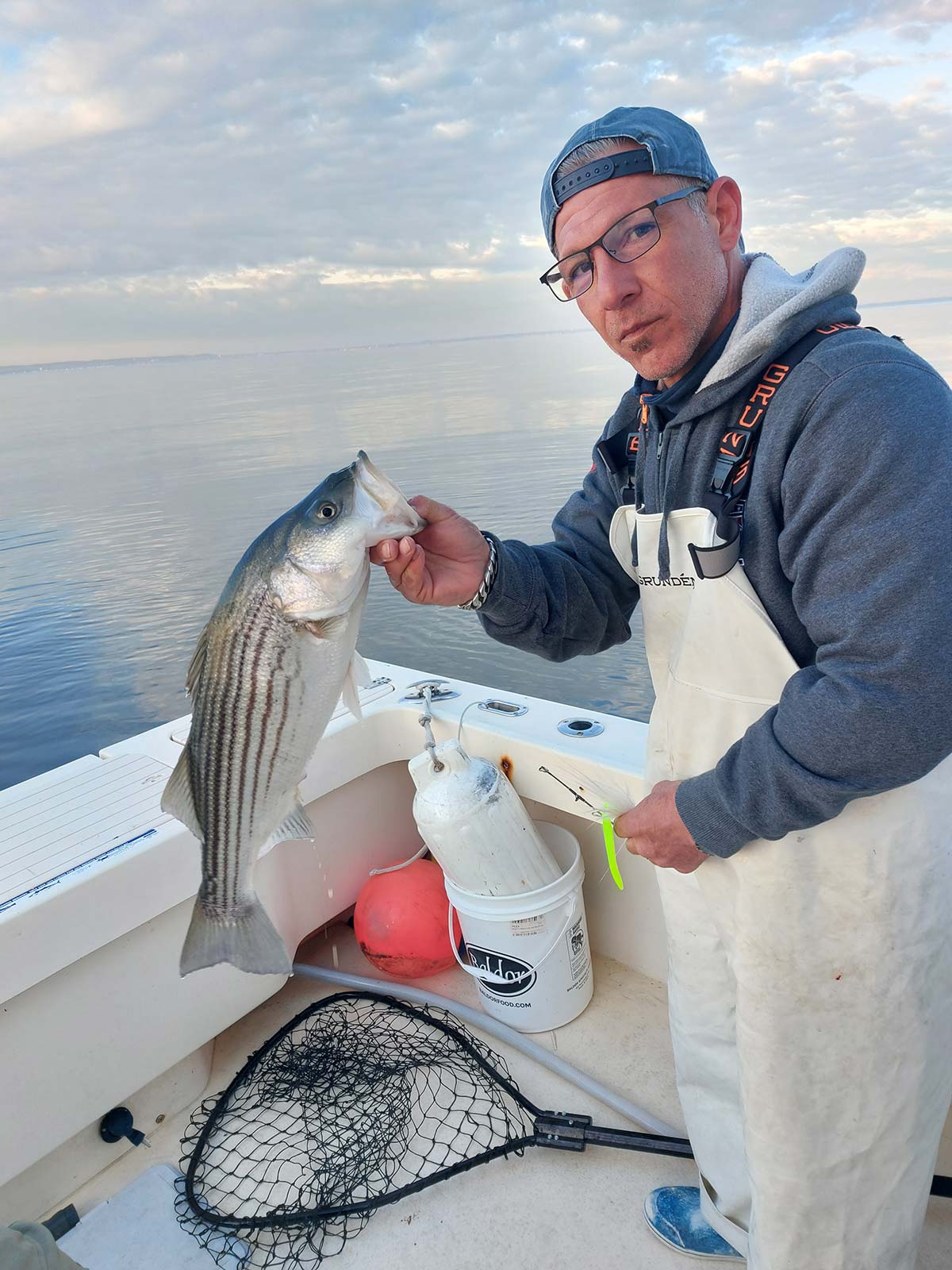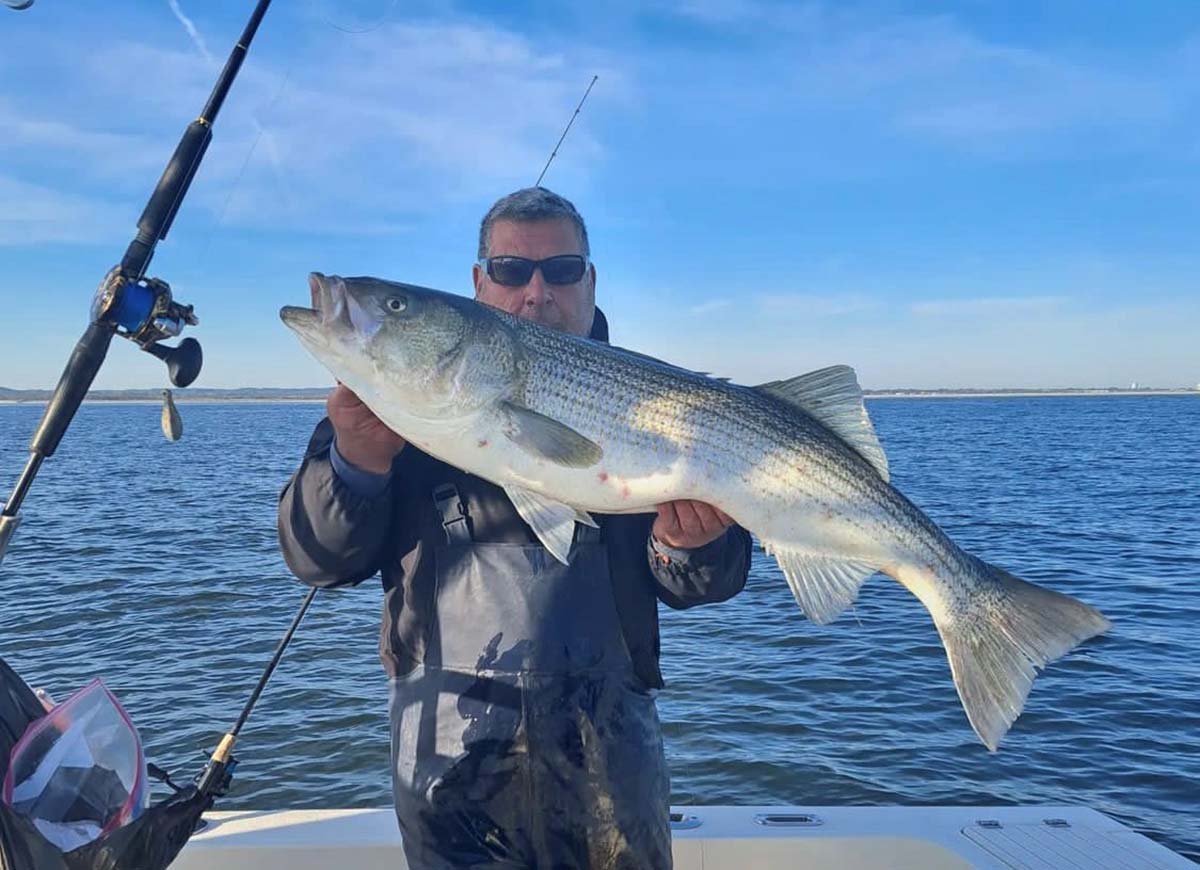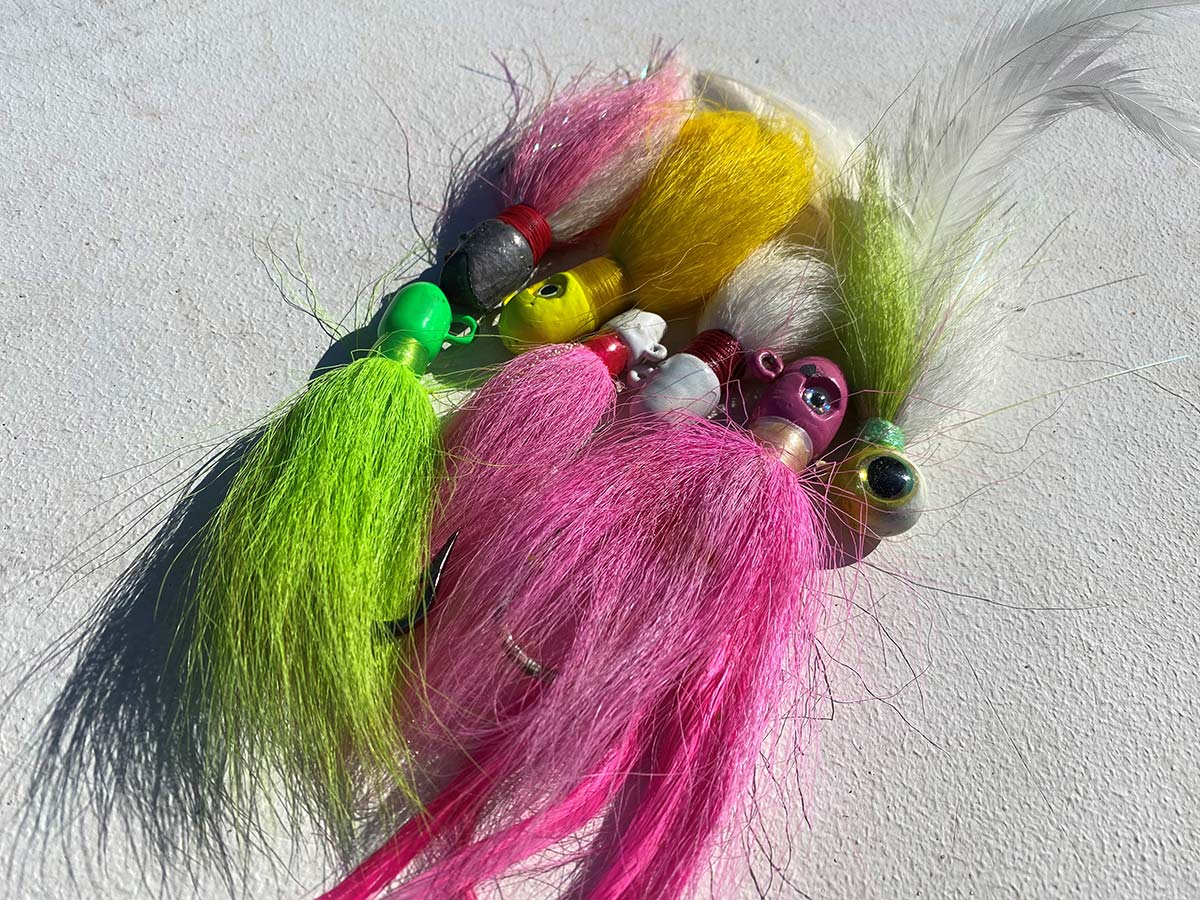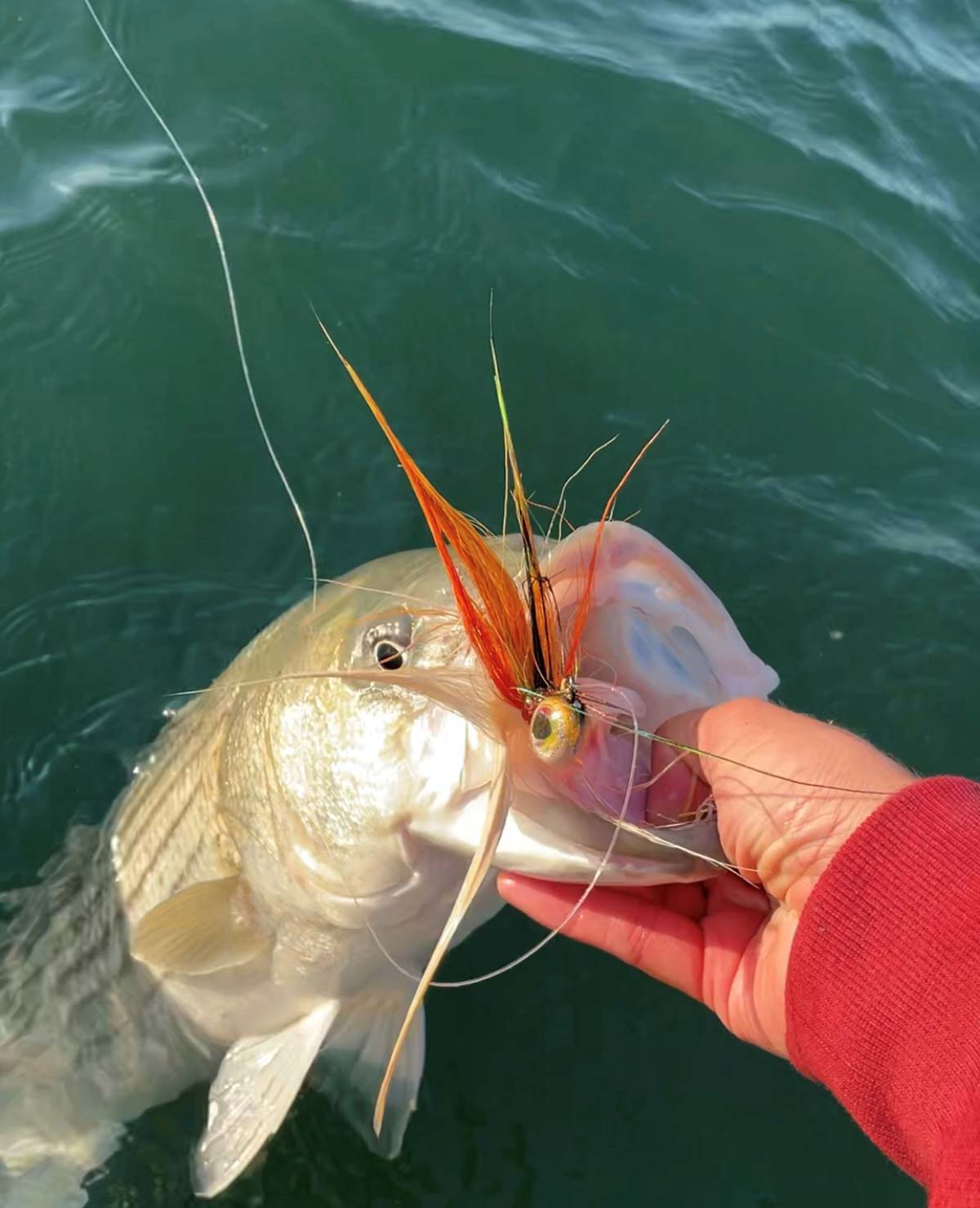
So you want to fish the bucktail huh?
To quote one of my compadres “real anglers fish with bucktails.” That being said by the master himself Cheech of Rockaway fame. If you are a purist that is to say someone who eschews bait for the art of plugging, well, you better learn the nuances of fishing with a bucktail. The bucktail, a seemingly nothing of a lure a piece of lead adorned with just what the name implies; bucktail hairs. The configuration of which has many designs. A seasoned veteran knows what I mean; Ball, Upperman, Andros, Jetty Caster, Smiling’ Bill, Bullet Head—endless designs in a seemingly endless pallet of colors some true Picassos; weights from a quarter-ounce to upwards of six ounces or more. Some greater but for this column I’ll acquaint you with weights geared toward water depth from one or two feet to about.
So you want to fish the bucktail huh? Well it’s not the typical crankbait, swimmer or paddletail that does the work for you. Oh no, the bucktail and its presentation relies upon the user’s ability to not only impart action but adapt accordingly. In this age of technology, fast food and texting, the bucktail is for lack of a better term, old school. It’s not cast and crank so if you’re faint of heart and need instant gratification the bucktail is not lure choice for you. However on the flip side if you watch old movies, drink your coffee black and like living on the edge well “here’s looking at you kid.” Okay so let’s get into the meat and potatoes and as always nothing is etched in stone or Gospel when it comes to fishing.

Rod & Reel Choice 101
Ideally you want a rod that has a fast taper yet a tip which can handle 3/8 ounce to 2-ounce bucktails. For bay and inshore fishing you’ll be probing depths from a foot to 30 feet. Now in the fall when bass are foraging in the shallows among the sod banks, ledges and clumps dotting the shoreline you may be in depths of less than 15 feet. More often 5 foot or less especially in the back bays and quiet areas. So it makes sense to be able to pitch a 1/2 to 3/8-ounce bucktail or less depending on pull or tide. On my back bay skiff I like a 7 to 7-1/2-foot stick; the lighter the better.
Let me expound on rod weight. When working a bucktail, sensitivity is a big part of presentation. The rod and reel will be primarily in your reel hand and as you impart action into the bucktail it can become fatiguing as you retrieve. Rods from the shore can go 8 to 11 feet but keep the lumber light in weight yet forgiving in its taper. The beauty of mixing old school and new is the realization that today’s rods and reels are so light in weight that if we had this technology decades ago we would be better fisherman.
Reels are also a big factor in bucktailing. Light reels made from composites are favored to cut down on the overall weight. Use common sense here—you’re not strapping a 50-year old Crack 300 on a light stick so small and more compact is a good choice. Crack 300?—a true blast from the past. The final Jeopardy answer is what was the panacea of surf reels pre-Van Stahl era. Most readers were probably in diapers when surfcasters would sell their souls to the devil for a Crack 300.
| KNOT TYING |
| All the knots mentioned in this feature are listed in The Fisherman Magazine’s knot tying archive section on the website. Here you can learn all of these important ones plus many more that will come in handy while out on the water. |
Now if you prefer conventional reels, well nothing beats a small baitcaster but I find retrieve and variables like wind and weight of the bucktail can be a factor with this reel choice. If you are going super light or it’s windy, stick to spinning.
Moving along let’s discuss line. Most synthetics (braids) work well for bucktailing. If you have a favorite that’s light in diameter then stick with it. I won’t get crazy here but I’ll say this: the lighter, thinner diameter the line, the more fish you will catch. Monofilament has its place and day but true bucktailers like feel and sensitivity plus hits and contact with bottom can be relayed via the line selection better with a braid. Light braided line bridled with a suitable top shot is the way to go. I join my line to my top shot without barrel swivels and unnecessary hardware. Leaning direct knots is the way I would suggest to go. Uni-to-Uni, Albright and FG Knot are a few to name.

The Art Of Bucktailing 102
Bucktails are a finesse lure which is to say the selection of the lure itself, and its presentation is all in your hands. “Hooper drives the boat chief” applies here. Listen we are not rebuilding the space shuttle, but they’re certain variables you need to apply. Often, as in always, you adjust constantly; slack water, slow tide, back bay, not much pull off the moon—light is right. On the flip side, reversing the aforementioned you may want to go heavier to stay closer to the bottom. You adjust by starting light and escalate.
A bucktail is the perfect lure. In the hands of a veteran it’s a killer. It mimics a variety of baits and can be tweaked with color and adornments. My color preference is white, but I can adapt when necessary. Feeding on weakfish fry, try yellow; sand eels, green; funky water, chartreuse; squid and sea robins dare I say pink. As far as icing on the cake (trailer strip) the proven time tested standby is pork rind or newer synthetic look alikes if you can’t find pork. I also like small twister tails when the tides slows down. It’s wise to keep a variety of weights, tails and rind with you. I go green and white for the most part. Wider rinds when the baits exhibit a bigger profile and are more sleek on the lighter heads.

The retrieve here is the true art. If fish are on the surface, you’re reading them on your sonar or you’re visually seeing them if you are on shore, you might cast and engage your retrieve instantly. In these cases a faster retrieve is often better. Keep the line tight, rod pointed at your line and reel. Side arm isn’t good unless it’s a windy day you’re trying to keep the bow out of your line.
For the most part bucktails are worked on the bottom or in the water column, this is where a sensitive rod/reel combo pays off. Keep the line tight and maintain the bucktail in the zone and you will get smacked usually as the bucktail cascades down. Strike hard and quick at any sudden hit. It could be bottom or it could be a fish. Vary your cadence on the retrieve, adjust the weight, speed and approach and you’ll be satisfied with the results after some time is put in. So as Don Corleone said may have said once “Act Like a man and fish with a bucktail.”




